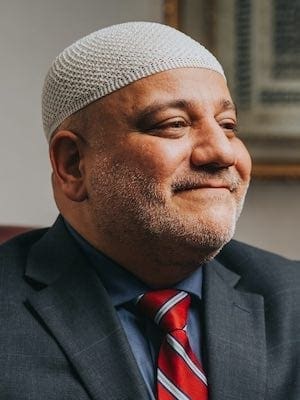
I grew up in a Palestinian refugee camp in Beirut, Lebanon, during the civil war that lasted from 1975 until 1990.
I even witnessed the 1982 Sabra and Shatila Massacre when a Lebanese Christian group killed anywhere from 300 to 3,000 people – mostly Palestinians and Lebanese Shiite Muslims living in Beirut refugee camps.
In the heart of all of this chaos is an experience of unintentional interfaith interaction.
My pre-school year was spent in a Christian school with Muslims and Christians caring for us. I grew fond of a Christian nun by the name of Sister Rahma. She was my favorite; she gave me sugar candy and made me feel special.
As a young person, who survived a massacre perpetrated by those who claim to be “Christians,” my profound upbringing in the Christian school came to save me from hate and a violent path.
I wrote more about these childhood experiences in a previous article for Good Faith Media, and specifically about how Sister Rahma’s kindness and mercy shaped my interfaith engagement in another article published by EthicsDaily.com (now Good Faith Media).
I also wrote in greater depth about my life’s experiences in Cloud Miles: A Remarkable Journey of Mercy, Peace and Purpose (Nurturing Faith Books, 2020), and some of my experiences as a refugee were recounted in a short documentary produced by EthicsDaily.com.
When I was an adult, I migrated to the U.S. and experienced the power of interfaith connection at its best – in particular, when my faith was under attack.
Whether it was during the Alfred P. Murrah Building bombing here in Oklahoma City, the September 11th attacks, or the protests during the Muslim Days at the Capitol in Oklahoma City, the interfaith community was always there, ready to assist.
As an Imam who decided to attend seminary at an old age, I learned that my faith enjoins on me to dialogue with people of other faiths, and it is the only way for peace.
Dialogue with the people of the Scripture (Jews and Christians), in the best way (with good words and in good manner, say (to them): “We believe in that which has been revealed to us and revealed to you; our God and your is One and to Him we have submitted” (Quran 29:46).
As an interfaith leader and a professor of interfaith and religious pluralism, I teach my students the basis of a successful interfaith dialogue. I call it the 3C’s:
1. Conversation and not conversion.
2. Communication and not confrontation.
3. Cooperation and not condemnation.
With these basic principles, I know we can change hearts and minds.
You see, Sister Rahma’s name literally translates to the word, “mercy”; it had such a profound impact on me that I named all of our social organizations after her.
Editor’s note: This article is part of a series calling attention to February 1-7 as World Interfaith Harmony Week. The previous articles in the series are:
Beyond Harmony to Friendship | Robert P. Sellers
How I Came Home With a Gift From Ayatollah Sistani | Andrew Larsen
Protecting Religious Freedom Must Be an Interfaith Effort | Maureen O’Leary

